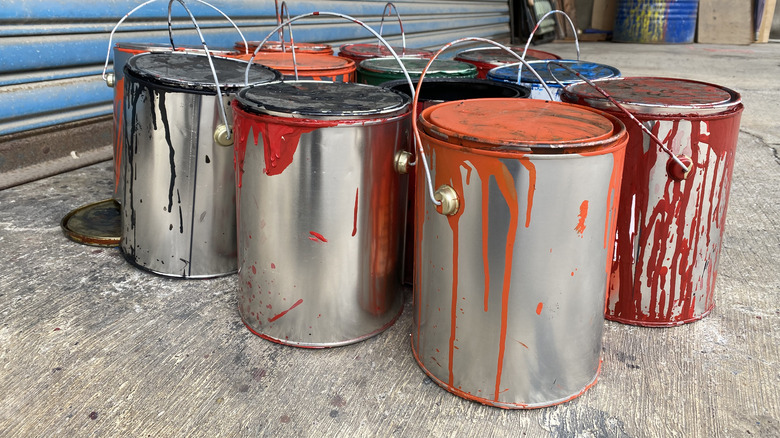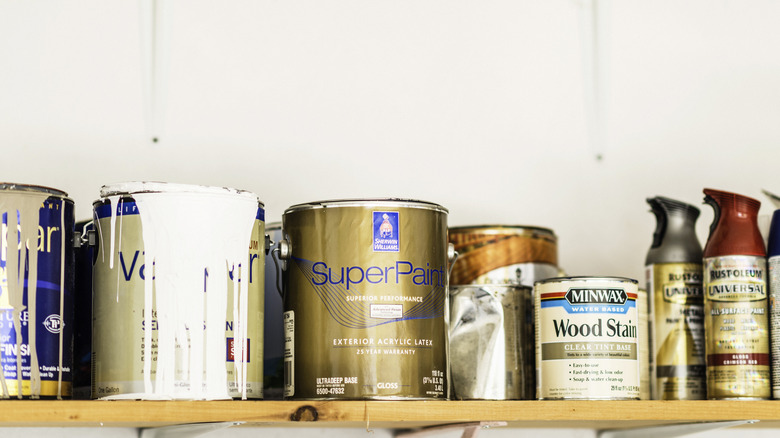Why You Shouldn't Store Paint In A Shed (And What To Do With It Instead)
There are many types of paint projects that you can take on, whether you're putting your home together or simply looking for a quick, easy project to occupy yourself. When the paint job is over, it's important to store any leftover paint properly so it can maintain its quality for a long time. The common paint storage mistake you're probably making is storing it in a place that leaves it exposed to extreme temperatures, like in a shed. The right place to store paint is in a cool and dry place that doesn't receive direct sunlight.
The two things to be mindful of are the storage environment and the status of the container that holds the paint. Before storing, the can's lid and rim should be cleaned well. Then, the can should be lined with plastic wrap before the lid goes over so there's an airtight seal. For the storage environment, you need to choose a place that can maintain a set temperature.
Always store paint in a climate-controlled area
Unless you've gone out of your way to make it climate-controlled, the shed won't protect your paint from spoiling due to extreme cold or heat. A harsh winter or summer will easily change the paint and affect its freshness, so find a place in your home that isn't affected by the seasons and climate. This can be the pantry or a closet. A garage can also work if it's climate-controlled. Keep in mind that the temperature in your chosen storage place should be between 60 and 80 degrees Fahrenheit.
However, we think the best way to store your leftover paint is in the basement. In a dry, dark spot, paint will get the ideal, cool temperature it needs to preserve its quality. Make sure to keep paint cans away from any heat sources if they are flammable products. They should also be kept on a shelf so moisture doesn't rust the cans.

